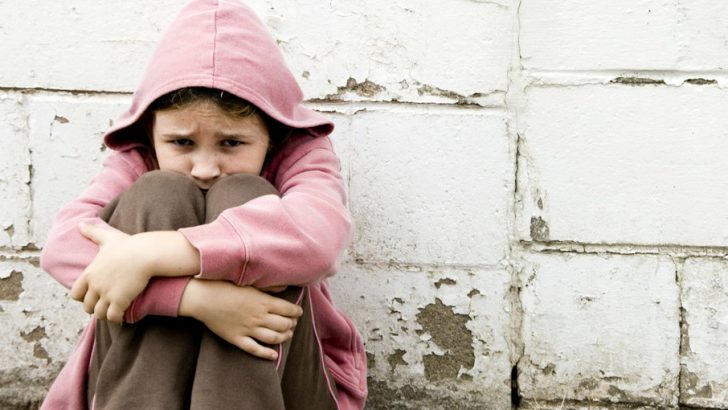Young people leaving care face a mountain of obstacles, with homelessness being one of the most acute. Although it is true there are challenges for any child in becoming independent, the life experience of many exiting the State’s charge lead to highly complex cases.
In the context of Ireland’s housing crisis there are now over 900 young people aged 18-24 who are homeless. Many of these cases are hidden from official figures as friends or family, who may be ill-equipped to help for an extended period of stay, offer their homes.
It is undeniable that care leavers are at a high risk of falling into homelessness when they leave foster or residential care. Foster carers have been known to continue to offer the child – whom many see as their own – a home long after they turn 18, but this is not always possible.
Rebuilding Ireland, the Government’s plan for housing and homelessness, was launched in July 2016 by then Housing Minister Simon Coveney. Since then homelessness figures have almost doubled and housing prices and renting has continued to rise.
Care leavers were not forgotten in the struggling plan however, under the Capital Assistance Scheme (CAS) there is funding in place for Approved Housing Bodies (AHBs) to provide residential units to accommodate these young people.
Tusla, the Child and Family Agency, is coordinating the overall response and has told housing agencies its protocols regarding young people leaving care. According to the Department of Housing, a report published in June 2018 contains a number of recommendations regarding the treatment of care leavers.
Initiative
The department says the initiative is “achieving momentum” and as of June 2018, 40 properties were being delivered via this scheme across the country.
“Tusla has also established a national forum for AHBs to ensure effective implementation in all areas with an emphasis on forward planning to anticipate and plan for demand in 2019 and 2020,” the department said in a statement to this paper.
Despite this, charities have said the issue of care leavers facing immediate homelessness is still rampant. For Focus Ireland 15% of over 100 care leavers they work with are homeless while the Peter McVerry Trust say across their adult services 20% have a history of State care; in their specialist 18-24 year old services this figure rises to 50%.
According to Merchants Quay Ireland figures from January to September of 2017, 55 of 136 (40%) of the 18-25 year olds their Young Person Support Worker has helped came from State care.
Speaking about the challenges faced by young people, and particularly care leavers, to secure independent accommodation, Fr Peter McVerry said: “The problem for them, at 18 or 19 or 20, it’s very difficult to get your own independent accommodation, for one because you’re only on the local authority waiting list for a few months or a year or two, so you’re way down at the bottom of the local authority waiting list.
“And landlords don’t want you because they see young people as people who might potentially be having parties.”
He added: “Most 18-year-olds growing up in a good home could not just move out, just leave the family home and survive. So asking an 18-year-old who has grown up in care to leave the family home and go into adult homelessness, that’s just asking too much.”
Although hopes for the housing scheme for care leavers are high there are still policies that need to be revamped to really assist them adequately after they exit care according to Neil Forsyth of the Irish Aftercare Network.
In preventing homelessness among care leavers he mentions three points saying:
-Let young people remain in care longer. This is happening in other jurisdictions – Australia, Britain (Staying Put), Canada and various State in the US. Or, at the very least, don’t expect any young person to leave until secure accommodation has been sourced. Young people are still leaving care on their 18th birthday with nowhere to go except homeless services.
-Tusla could acquire properties in other ways apart from CAS. They could lease properties, the same way Approved Housing Bodies do all the time.
-Government could insist that local authorities ring-fence a small number of properties in each area for young people leaving care in their area each year.
Mr Forsyth told The Irish Catholic: “At any given time, of those young people who are actually receiving an aftercare service, about a third are either homeless or very much at-risk of homelessness due to insecure accommodation (extended family and friends) or they were forced to return to their family of origin (from which they were taken into care) and relationships are breaking down.
“Moreover, even those who have managed to find accommodation in the private rented sector, often they struggle with managing their tenancy and cannot be given the level of support they need.”
Question mark
Speaking of the Better Outcomes, Brighter Futures national policy framework 2014-2020 which makes specific mention of children in care, published by the Department of Children and Youth Affairs, Policy Manager of EPIC (Empowering People in Care) Karla Charles says there’s a question mark over how much accountability it has actually secured.
“One of the things that that document drew a lot of attention to was the working relationships between all the various departments and I think that’s across the board. Education, disability…and then on the other side, Tusla,” she said.
“They should have extremely good working relationships, and we’re not always sure that they are as good as they could be.
“I’m not sure where the problems originate or whether it’s just that everybody’s overstretched or whether it’s that Tusla, even though they claim they’re not firefighting, it often seems to be the case that they are dealing with issues.”
She said that regarding aftercare itself there is a lack of social workers but also the consistency of how the service is delivered across the country in terms of policy interpretation and guidelines.
The fact that young people might be accessing hostel services and have to vacate them during the day and then come back in the evenings, that’s not acceptable.
Of course, they’re going to fall prey to all sorts of things,” she added.
“And even if you think of provision of aftercare service: it’s up until 21 if you’re not in full-time education. Well, probably those that have been let down by the services and been the most vulnerable, been the most abused and neglected are the ones that will not be able to continue on to education because they won’t have done well in school and they won’t have had good experiences in school, so shouldn’t we be supporting them longer instead of supporting them less?”
According to Tusla’s most recent figures they employ 100 aftercare staff, this is supplemented by about two dozen aftercare staff provided by NGOs. There are 2,366 young people in receipt of aftercare services nationally as of the third quarter of 2018 according to the Government body, but there are still “massive waiting lists” for those that need the service according to the Irish Aftercare Network.
While policy is not updated, aftercare staff continue to be in short supply and while housing is often impossible to acquire, there’s much to be desired in the Government’s response for those working to promote better outcomes for children leaving care.


 Chai Brady
Chai Brady
